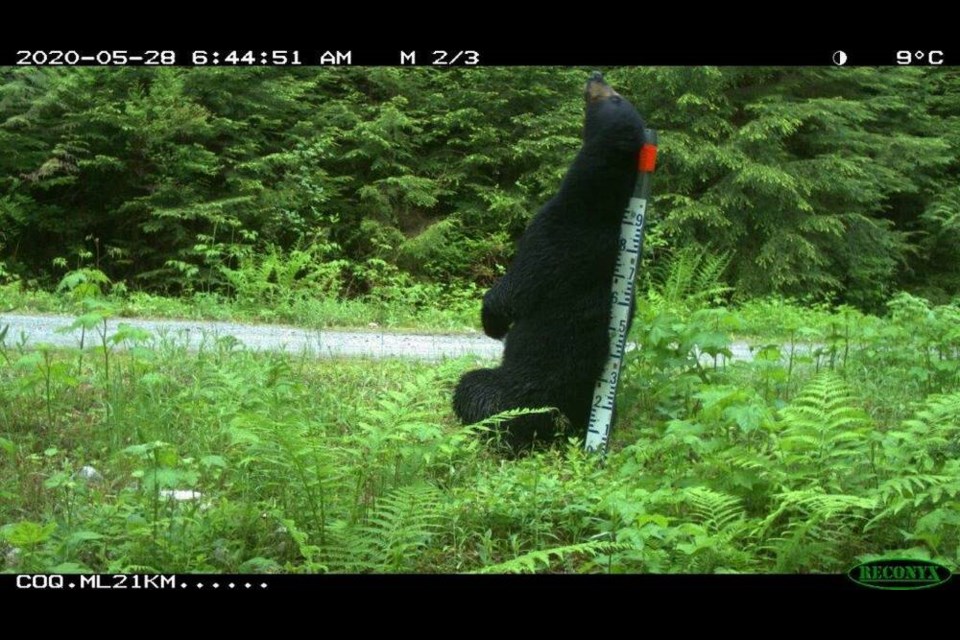Bears, wolves, and elk, oh my… a fresh batch of images snapped by wildlife cameras at watersheds on the North Shore and in Coquitlam have been released by Metro Vancouver, and there are more than a few Attenborough-worthy scenes.
The cameras installed at the Coquitlam, Capilano and Seymour watersheds captured several species over the course of the year, including black bear, Roosevelt elk, black-tailed deer, grey wolves, bobcats, coyotes and cougars.
Among the wildlife not afraid to step into the spotlight was a lone grey wolf, caught trotting through the snow covered grounds of the Seymour watershed; a black bruin enjoying the bare necessity of a simple back scratch against a snow-level gauge, and a large number of elk snapped navigating their migration routes.
While black bears indulging in trope bruin behaviour makes for swoon-worthy wildlife shots, the encounters are hardly unexpected, with the creatures routinely caught on cameras at all three watersheds, said Jesse Montgomery, a division manager with Metro Vancouver’s Watersheds and Environment team.
Far more surprising scenes for Watershed staff featured Roosevelt elk and grey wolves, he added, two species that were once rare in these areas but have recently shown signs of burgeoning.
“One of the more remarkable things that we’ve seen in the last few years is, what we’re thinking to be, the first returns of having grey wolves back in the area, a species that would have formerly been extirpated from this part of the province due to over hunting, or loss of prey,” said Montgomery.
The grey wolves have been lured into the area by Roosevelt elk populations travelling their migration routes, said Montgomery, and their presence serves as evidence that efforts from the provincial government and the local First Nations to bolster elk numbers in the region are proving successful.
A thriving elk population is also evidence of a thriving forest, essential for a watershed location, said Montgomery.
“An elk population would be specifically interested in a certain type of forage vegetation, and their abundance in these areas is a key indicator of strong biodiversity and ecosystem health, and what’s good for the forest ecosystem is typically also mutually beneficial for drinking water quality, which is our key objective in these areas,” he said.
Montgomery said the results of the wildlife monitoring program, which began in 2017 with a single camera in the Capilano reservoir, have so far been “very positive” and have highlighted population recoveries and wildlife growth on the North Shore and in Coquitlam.
“It’s clearly a huge benefit to the region having these large and protected water supply areas,” he said.
“Not just for providing our drinking water, but for effectively impacting the interconnected ecosystems, which are certainly a benefit to fish and wildlife populations, as we can see from this program.”
Mina Kerr-Lazenby is the North Shore News’ Indigenous and civic affairs reporter. This reporting beat is made possible by the .



